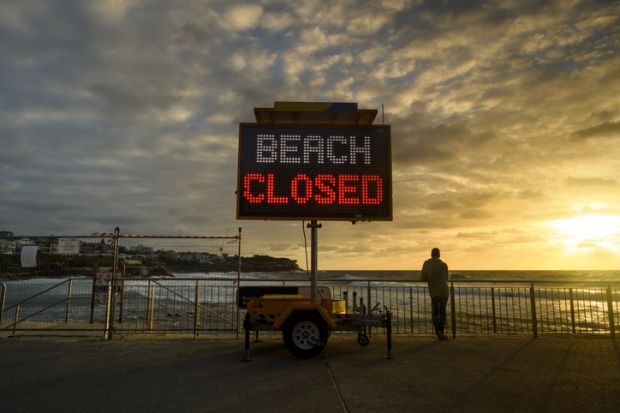Three Victorian institutions plunged into the red last year, as Covid-19 slashed more than half a billion dollars from the earnings of the state’s nine universities.
RMIT, La Trobe and Swinburne universities saw relatively healthy operating surpluses reversed into deficits of about A$50 million (£28 million) each, as they battled dwindling revenues and soaring expenses.
The figures, outlined in institutional annual reports published on 4 May, show that the surprise surpluses registered by elite Melbourne and Monash universities have not been achieved elsewhere. RMIT’s 2019 surplus of A$63 million collapsed into a A$56 million shortfall, while La Trobe and Swinburne experienced reversals to the tune of A$71 million and A$83 million respectively.
Other universities registered vastly depleted surpluses, with Deakin’s A$109 million buffer in 2019 trimmed to an operating result of just A$17 million last year. Victoria University’s A$24 million surplus in 2019 was reduced to A$6 million, while Federation University Australia’s A$37 million result contracted to just A$4 million.
The financial accounts of Melbourne and Monash reveal healthy 2020 surpluses of A$168 million and A$277 million respectively – roughly in line with the unaudited results the two universities announced in February, but almost quarter of a billion dollars less than they jointly posted in 2019.
The sole institution to buck the trend was the niche University of Divinity, which boosted its earnings last year by almost half a million dollars and halved the size of its tiny 2019 deficit. But overall, the state’s universities lost more than two-thirds of the combined surplus they had amassed in 2019, when only Divinity was in the red.
While Melbourne has said its operating result on paper does not reflect its fiscal reality, with the bulk of its surplus unavailable for general operational expenses, La Trobe was keen to stress that its situation was not as bad as it appeared.
It said its A$51 million deficit was primarily composed of “abnormal items” stemming from the pandemic, including termination payments and “one-time loan break costs”. If these costs were disregarded, the university achieved an “underlying” operating loss of around A$8 million.
La Trobe’s accounts show that the university’s overall expenses fell marginally in 2020, partly because of reduced expenditure on consultants. But revenue tumbled by 9 per cent, thanks to a A$42 million loss from international students’ tuition and a halving of non-course charges such as parking fees. Revenue at RMIT and Swinburne shrank by about 4 per cent, while costs rose by around 5 per cent.
Audited accounts have now been published by 20 Australian universities, with seven registering deficits. While institutions based in New South Wales, South Australia, Tasmania and the territories are yet to release their annual reports, six of them have outlined indicative results. Three of them, including the highly ranked Australian National University and UNSW Sydney, have forecast deficits.
The Victorian annual reports suggest that voluntary pay cuts accepted by some vice-chancellors have not yet filtered through to the financial accounts. Some continuing university bosses, including Monash’s Margaret Gardner and Melbourne’s Duncan Maskell, attracted pay rises of 1 to 2 per cent.
But La Trobe’s John Dewar and Divinity’s Peter Sherlock relinquished 12 to 15 per cent of their pay, while Victoria University executives collectively donated A$670,000 to their institution.







